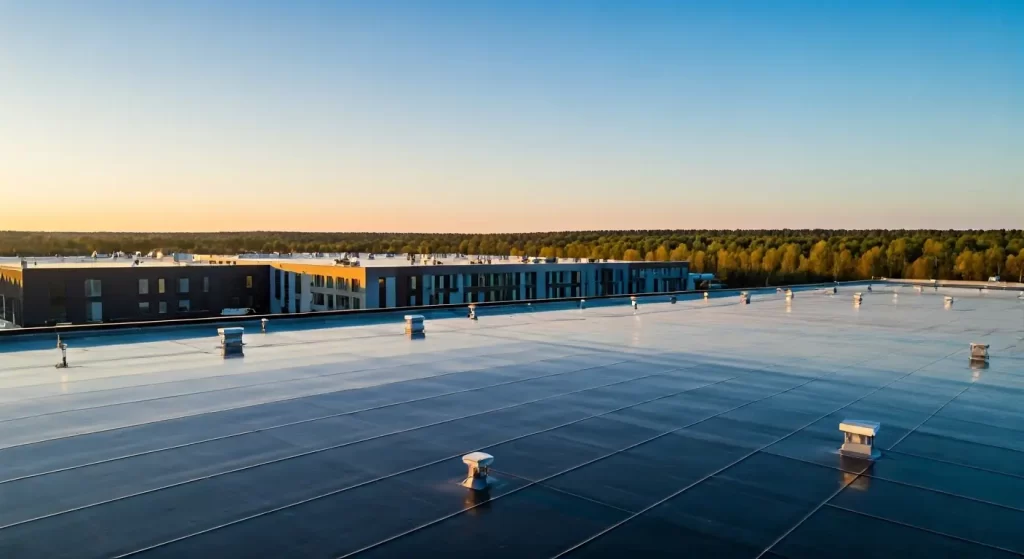A commercial roof faces daily exposure to rain, sun, and temperature extremes, making waterproofing solutions essential for long-term performance. Shield Roofing brings over 25 years of experience to San Antonio, TX’s commercial roofing industry, offering tried-and-true waterproofing systems designed for durability and energy efficiency.
Investing in the right waterproofing membrane doesn’t just protect your roofing system from water damage but also safeguards your property, lowers maintenance costs, and ensures your commercial building remains resilient under the harshest Texas conditions.
Understanding Waterproofing Membranes for Commercial Roofs
Choosing the right waterproofing membranes is crucial for the longevity and efficiency of commercial roofing. These membranes act as a durable barrier, preventing water infiltration that can damage your building’s structure and insulation. Selecting appropriate materials reduces the risk of leaks and costly repairs.
For San Antonio’s climate, effective options include synthetic rubber, PVC, and liquid-applied membranes. Each has unique strengths suited to different roof types and conditions, so it’s essential to consult experienced roofing contractors for tailored recommendations.
What Are Waterproofing Membranes?
A waterproof membrane is a protective layer for commercial roofs, providing a seamless barrier against water infiltration, even in heavy rain or standing water—common flat roof issues. This system safeguards inventory and equipment.
While weather exposure and foot traffic can crack roofing systems, waterproof membranes flex with the roof to prevent leaks from minor issues, maintaining a watertight seal.
These membranes extend roof lifespan and reduce costly repairs. “A properly installed waterproof membrane significantly lowers long-term maintenance,” says industry expert Carrie Powers. Shield Roofing’s advanced systems offer San Antonio, TX businesses reliable protection against water damage and structural decay.
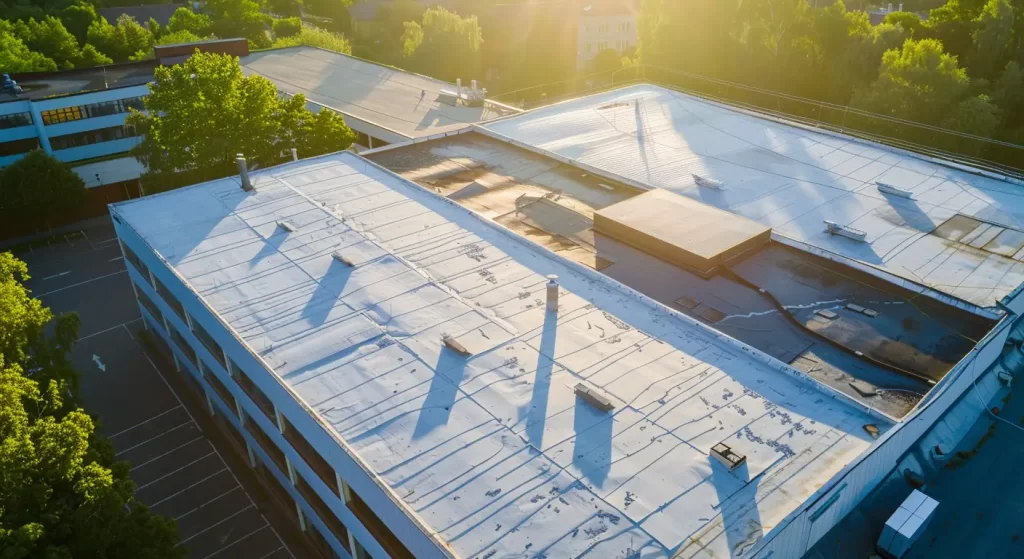
Types of Waterproofing Membranes Used in Commercial Roofing
Waterproofing membranes are crucial for protecting commercial roofs from water damage. They can be categorized by materials and application methods. Synthetic rubber membranes are favored for their durability and flexibility, providing a seamless leak barrier. Polyurethane coatings deliver excellent UV resistance and weather durability, extending roofing lifespans.
Elastomeric and acrylic coatings create watertight seals while enhancing energy efficiency by reflecting sunlight. For flat roofs, polyvinyl chloride (PVC) membranes are commonly used, offering strong protection against water pooling and environmental factors. Choosing the right option can greatly impact the longevity and maintenance costs of commercial roofing projects.
How Waterproofing Membranes Extend Commercial Roof Lifespan
Waterproofing membranes extend a roof’s lifespan by blocking water penetration and minimizing long-term damage. Their seamless application ensures that even minor cracks or weaknesses are sealed, drastically reducing the risk of leaks. As a result, building owners avoid the cycle of frequent repair costs and premature replacements.
Proper waterproofing also helps control maintenance expenses by preventing mold growth, insulation damage, and structural issues caused by persistent moisture. This proactive approach is key to maximizing the life of your roof and protecting your property investment.
Protection Against Leaks and Water Damage
A reliable waterproofing system effectively prevents water infiltration, safeguarding against significant structural damage. High-quality waterproofing membranes create a watertight seal, protecting commercial roofs from leaks due to heavy rainfall or snowmelt.
In addition to immediate protection, these materials enhance long-term durability. Regular inspections and maintenance extend a roof’s lifespan, reducing costly repairs and preserving indoor air quality. Ultimately, investing in waterproofing solutions protects the roofing system and boosts energy efficiency by minimizing mold growth and HVAC issues.
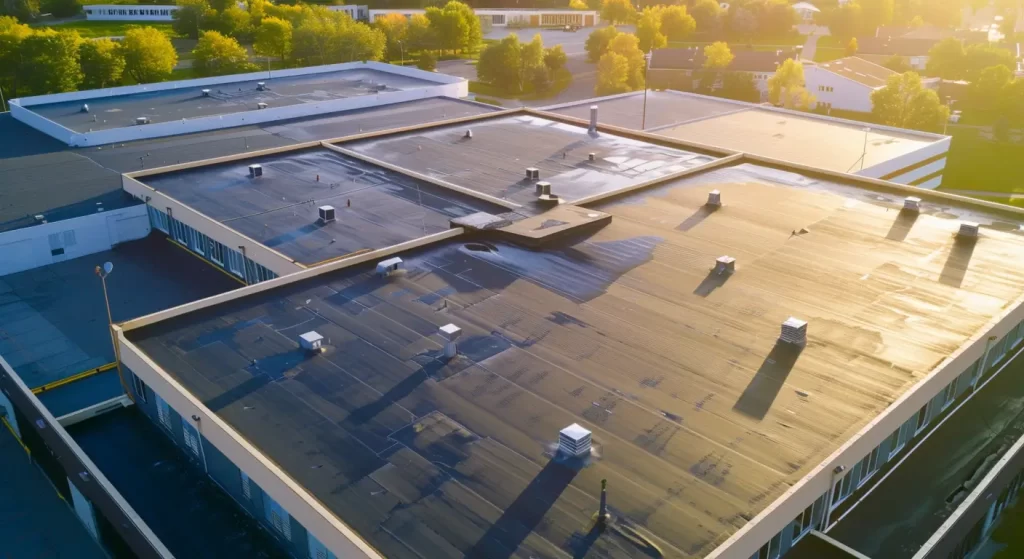
Resistance to UV Rays, Heat, and Weather Extremes
San Antonio roofs face intense sun and temperature fluctuations. UV-resistant waterproofing membranes shield against damaging rays, reducing cracking, fading, and material deterioration—common causes of leaks.
Key protections include:
- High UV resistance that reflects sunlight and lowers rooftop temperatures.
- Flexibility to prevent splitting during extreme temperature changes.
- Durability against wind, hail, and severe weather.
These features extend the lifespan of commercial roofing systems and minimize repairs. Membrane technologies enhance structural integrity while improving energy efficiency, keeping your building comfortable and utility costs down.
Major Benefits of Installing Waterproofing Membranes
The benefits of waterproofing for commercial buildings go far beyond leak prevention. An effective system extends the life of your roof, lowers ongoing repair costs, and can boost energy efficiency by reflecting heat away from the building. For San Antonio, TX business owners, this translates to safer, more durable buildings that maintain their value over time.
Shield Roofing’s expert installation of high-quality products means you benefit from fewer maintenance headaches, improved building health, and long-term savings. The next sections will explain exactly how waterproofing membranes achieve these results.
Cost Savings Over the Life of Your Roof
Balancing expenses is crucial for property managers and building owners, especially regarding the long-term financial impact of commercial roofing. Investing in waterproofing membranes can yield significant savings by reducing maintenance costs and extending a roof’s lifespan. These membranes create effective barriers that minimize leaks and water damage, preventing costly repairs.
Additionally, advanced materials like synthetic rubber and polyurethane coatings enhance durability and energy efficiency, lowering HVAC demands and energy bills. Regular inspections and maintenance also extend roof functionality, proving that proactive waterproofing leads to substantial savings and better indoor air quality.
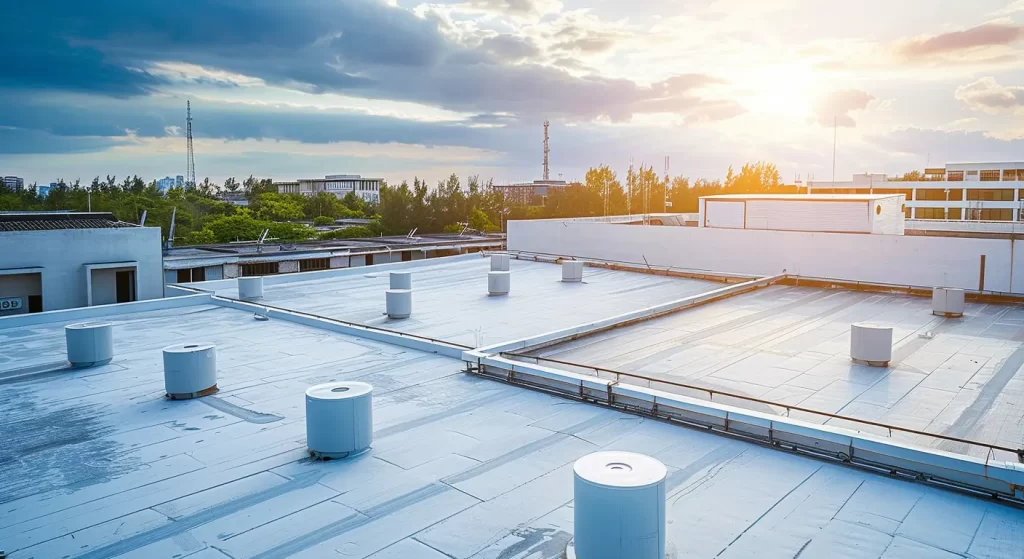
Enhanced Structural Integrity and Longevity
A robust waterproofing system strengthens your roof, preventing water infiltration that causes rot, rust, and mold. By maintaining a protective barrier, membranes ensure the long-term health of your building and its systems.
Regular maintenance enhances your roofing by identifying minor issues—such as punctures or seam separations—before they worsen. Routine inspections and timely upgrades keep your commercial roofing system performing optimally.
Ultimately, effective waterproofing ensures longevity, safeguarding your property from structural damage and preserving its value for decades. Shield Roofing’s commitment to quality guarantees your business is protected, rain or shine.
Comparing Waterproofing Membranes to Other Roofing Solutions
Not all roofing solutions offer the same durability and performance. Waterproofing membranes deliver superior protection by forming a continuous, flexible barrier that outlasts many traditional coatings and patch methods. Their ability to adapt to roof movement and weather extremes makes them a preferred choice for San Antonio commercial properties.
By contrast, other roofing systems may provide only partial coverage or degrade quickly, resulting in shorter service life and higher maintenance demands. Up next, we compare membrane systems in terms of longevity and suitability for local building types.
Longevity and Performance Differences
Various waterproofing membranes are used in commercial roofing, each offering unique longevity and performance benefits. Synthetic rubber membranes provide flexibility and water resistance for flat roofs, while polyurethane coatings excel in UV resistance, extending roof life under harsh conditions. Performance metrics, such as elastomeric coating durability and PVC membrane seamlessness, determine a roofing system’s resilience against heavy rainfall and temperature changes. Regular inspections and maintenance can enhance membrane longevity, enabling property managers to address wear proactively. By choosing the right materials and application methods, building owners can lower maintenance costs and improve energy efficiency over time.
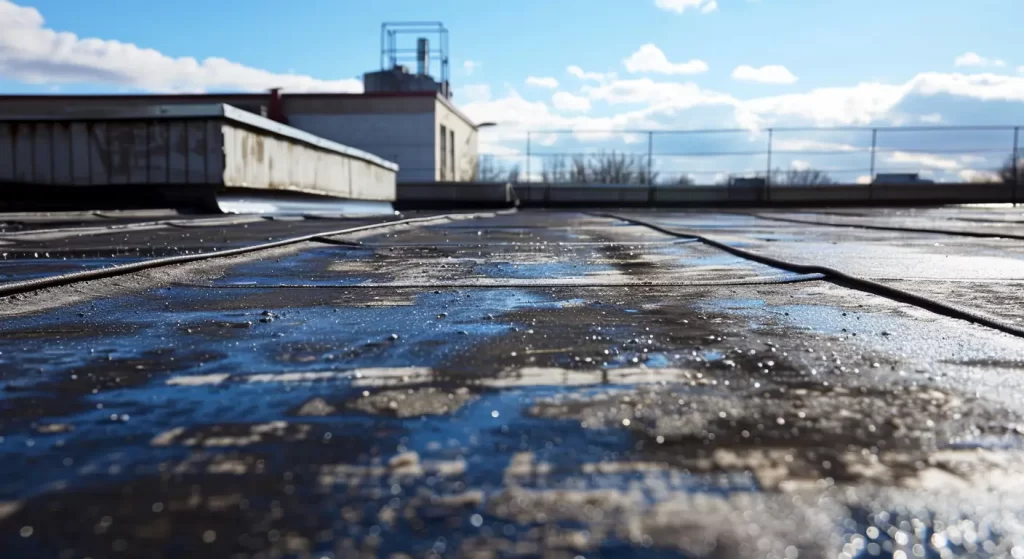
Applicability of Waterproofing Membranes on Popular Roofing Materials
Waterproofing membranes integrate seamlessly with today’s most popular roofing materials, including TPO, EPDM, and metal. Their flexibility and strong adhesion make them an excellent choice for both new installations and roof restorations. Shield Roofing’s range of commercial waterproofing services ensures every key area of your building receives the protection it needs.
Selecting the best system requires an understanding of both the material and the environmental conditions. Our team’s experience with San Antonio’s climate and building codes guarantees effective waterproofing for every project.
TPO, EPDM, and Metal Roof Compatibility
TPO, EPDM, and metal roofs are popular in commercial roofing due to their durability. Waterproofing membranes enhance these materials, providing a long-lasting barrier against water and environmental threats.
- TPO roofs utilize heat-welded or liquid-applied membranes for energy efficiency and reduced leak risk.
- EPDM, a synthetic rubber membrane, pairs well with liquid coatings and sheet membranes for effective flat roof waterproofing.
- Metal roofs benefit from elastomeric or silicone coatings that seal seams and prevent water intrusion.
Considerations for Custom or Specialty Commercial Roofs
Custom and specialty roofs present unique waterproofing challenges due to their shapes and materials. A thorough assessment of the roof’s surface is essential before selecting a membrane system. Application methods—brush-on, spray-applied, or sheet-applied—vary based on accessibility and complexity. Experienced contractors ensure all corners and penetrations are sealed to prevent leaks in hard-to-reach areas. Shield Roofing specializes in clay, green roofs, and hybrid systems, providing tailored solutions for your property with advanced materials and precise application to protect complex commercial roofs in San Antonio, TX.
Step-By-Step Process for Applying Waterproofing Membranes
Proper application is vital for maximum membrane performance. The process starts with thorough roof surface assessment and preparation to address any issues that could undermine the new barrier. This step often involves cleaning, repairing, and priming the surface to ensure strong adhesion.
The next stage involves expert installation using proven application methods suited to your roof’s design and type. Regular inspections during and after installation help maintain the effectiveness of the system and offer peace of mind to property managers and business owners.
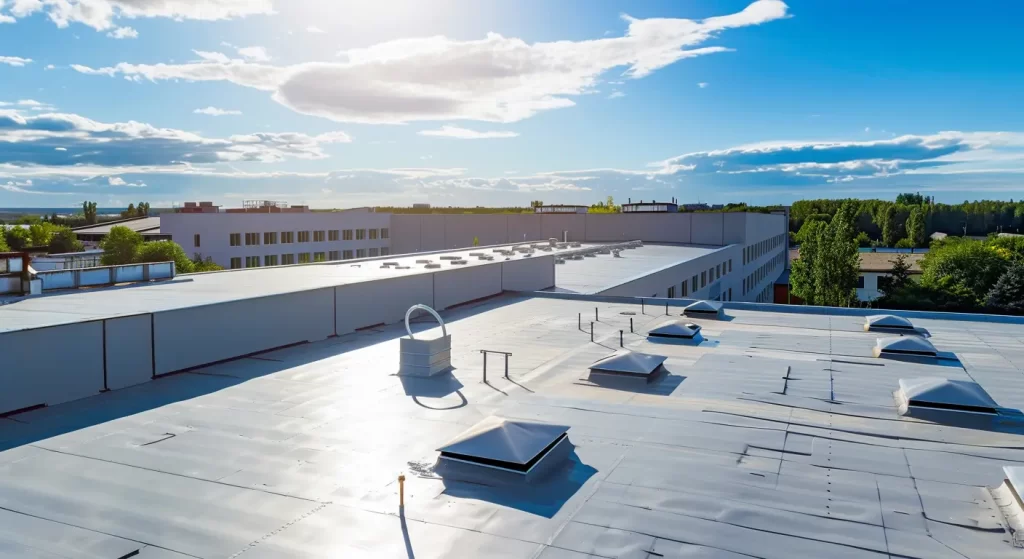
Signs It’s Time to Replace or Install a New Waterproofing Membrane
Recognizing when your commercial roof needs a new or replacement waterproofing membrane is crucial for preventing costly repairs. Key indicators include visible cracks, recurring leaks, water pooling, and noticeable signs of wear or UV damage. These issues often point to a failing barrier, which no longer offers effective waterproofing for your building.
Delaying replacement can result in structural damage, mold growth, and higher maintenance costs. A proactive approach—regular inspections and timely upgrades—keeps your property protected and extends your roof’s lifespan, ensuring your investment remains secure.
Detecting Early Warning Signs of Membrane Failure
Regular inspections of your commercial roofing system can reveal early signs of waterproofing membrane failure. Look for visible cracks or splits in the membrane, which indicate potential water infiltration. Check for water pooling or stagnant areas that suggest poor drainage, as these can cause structural damage and costly repairs.
Mold growth and discoloration on the roof’s surface are red flags, often indicating moisture issues. Building owners and property managers should also monitor changes in indoor air quality, as they may signal leaks affecting HVAC efficiency. Addressing these symptoms proactively can extend your roof’s lifespan and prevent premature replacement.
Professional Roof Inspection and Maintenance Recommendations
Regular inspections by qualified roofing contractors are essential for maintaining effective commercial roof waterproofing systems. These experts can identify wear signs, such as water pooling and membrane deterioration, preventing costly repairs. A proactive maintenance approach extends the roof’s lifespan and improves indoor air quality by preventing mold growth. Building owners and property managers should implement a routine maintenance schedule that includes regular cleaning, assessing waterproofing integrity, and protecting key areas from environmental damage. These measures safeguard the waterproof membrane, enhance energy efficiency, and reduce maintenance costs.
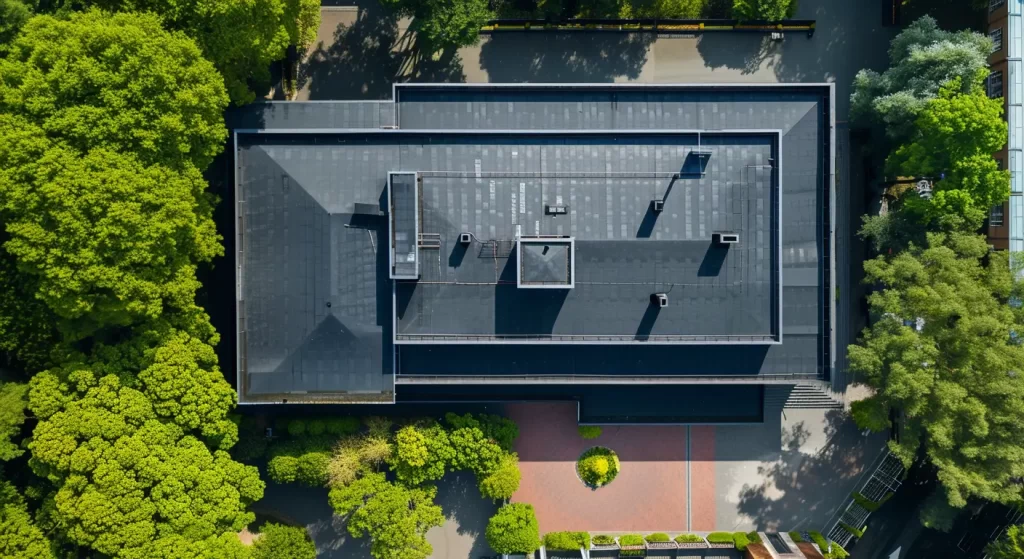
Connect With Us
Waterproofing membranes are essential for prolonging the lifespan of commercial roofs. They protect against leaks, UV rays, and severe weather, enhancing structural integrity and saving costs over time. Choosing the right waterproofing solution can significantly improve your roof’s longevity and performance. At Shield Roofing, we leverage 25 years of experience and high-quality materials from trusted brands like Owens Corning and GAF, and we are proud to be an Owens Corning preferred contractor. Our BBB A+ rating, membership in the CTRCA, and recognition by Directorii further ensure that we provide durable roofs. Don’t wait—contact us today for a consultation to safeguard your commercial property’s future!
Read our blog: How Much Time Does It Really Take to Replace a Roof?
Frequently Asked Questions
How long does a waterproofing membrane last on a commercial roof?
A quality waterproofing membrane on a commercial roof can last 15 to 30 years with regular maintenance and timely inspections. Its lifespan depends on factors such as environmental conditions, proper installation, and ongoing care, often postponing the need for major roof replacement.
Can all commercial buildings benefit from waterproofing membranes?
Yes, nearly every commercial building gains from waterproofing membranes. Whether you have a flat, low-slope, or specialty roofing system, the right waterproofing solutions protect against leaks, water damage, and costly repairs—making it a wise investment regardless of your property type or application methods.
